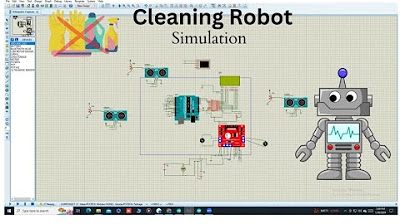How to build Funnels for FLL
Summary
TLDRThis video explains how to improve the consistency of robot movements in competitions by using mechanical alignment methods, such as funnels, in addition to sensors. The script highlights the challenge of motor backlash and how using sensors like the gyro or following black lines can help. Mechanical alignments, particularly funnels, offer a more reliable solution, as they guide the robot with a consistent physical structure. Tips on building effective funnels and adjusting robot programming for better performance are also provided, ensuring more accurate and predictable results during missions.
Takeaways
- 😀 LEGO motors have backlash or play, which can affect the consistency of robot movement during rotations.
- 😀 Teams often use sensors like the gyro or follow black lines to improve consistency in robot navigation.
- 😀 Mechanical alignment methods, such as funnels, can help guide the robot and keep it on course.
- 😀 Mechanical alignments are advantageous because the physical structure remains consistent across different competition tables.
- 😀 Sensors like color or gyro may behave differently in competition compared to practice, so mechanical solutions are more reliable.
- 😀 To build a funnel, choose the appropriate angled pieces based on the desired funnel angle.
- 😀 A larger funnel provides more time for the robot to adjust its path but takes up more space.
- 😀 The funnel should be as large as possible without affecting the robot's maneuverability.
- 😀 The funnel's base should fit tightly around the mission model to prevent inconsistent horizontal positioning of the robot.
- 😀 It's recommended to program the robot to drive based on seconds instead of rotations, to avoid issues where the robot gets stuck.
- 😀 Using time-based driving ensures smoother transitions between mission blocks, helping the robot to complete tasks more efficiently.
Q & A
Why does a LEGO robot not always drive the same distance per rotation?
-This inconsistency is due to the play or backlash in LEGO motors, which can cause slight variations in the robot's movement.
How do FLL teams increase the consistency of their robot's movement?
-Many teams use black lines or a gyro sensor to improve the consistency of their robot's driving behavior.
What is the advantage of using mechanical alignment, such as funnels, in a LEGO robot?
-Mechanical alignments, like funnels, help guide the robot and ensure it stays on course, offering a more consistent performance compared to sensor-based systems, which might behave differently in different environments.
How do funnels help in aligning the robot?
-Funnels align against the mission model, guiding the robot back on course if it drifts away, improving accuracy in the robot's movements.
Why is a larger funnel more effective than a smaller one?
-A larger funnel provides the robot more time to adjust its path, offering a better chance of realigning the robot effectively. However, it takes up more space.
What should be considered when building the base of the funnel?
-The base of the funnel should fit tightly around the mission model. If it does not fit perfectly, the robot may have inconsistent horizontal positions, affecting its performance.
What is the recommended programming approach for driving a robot in FLL?
-It is recommended to drive the robot based on time (seconds) rather than rotations. This prevents issues where the robot gets stuck due to mission restrictions on the number of rotations.
What could happen if the robot is programmed to drive based on rotations or degrees?
-If the robot is programmed to drive based on rotations or degrees, it may get stuck because the mission model could prevent the robot from completing the full set of rotations, disrupting the task.
How can using a funnel help confirm the robot's alignment for another mission?
-A funnel can be used to quickly confirm if the robot is on the correct path to start another mission, ensuring consistent alignment.
What are the key benefits of using a funnel for robot alignment in FLL competitions?
-The main benefits are consistent alignment with mission models, minimizing the impact of sensor inaccuracies, and ensuring that the robot performs well regardless of environmental differences between practice and competition tables.
Outlines

Esta sección está disponible solo para usuarios con suscripción. Por favor, mejora tu plan para acceder a esta parte.
Mejorar ahoraMindmap

Esta sección está disponible solo para usuarios con suscripción. Por favor, mejora tu plan para acceder a esta parte.
Mejorar ahoraKeywords

Esta sección está disponible solo para usuarios con suscripción. Por favor, mejora tu plan para acceder a esta parte.
Mejorar ahoraHighlights

Esta sección está disponible solo para usuarios con suscripción. Por favor, mejora tu plan para acceder a esta parte.
Mejorar ahoraTranscripts

Esta sección está disponible solo para usuarios con suscripción. Por favor, mejora tu plan para acceder a esta parte.
Mejorar ahoraVer Más Videos Relacionados

Cara Kerja dan Komponen Robot Line Follower | Internet of Things

Simulating the Future: Autonomous Cleaning Robot with Ultrasonic Sensors and Arduino in Proteus

how to GROW taller at ANY AGE using Wolff's Law!

SENSOR, tipos de sensores e APLICAÇÃO

Cara Membuat Lengan Robot Bertenaga Hidraulik dari Kardus

Bagaimana Cara Kerja Scroll Whell Pada Mouse?
5.0 / 5 (0 votes)
